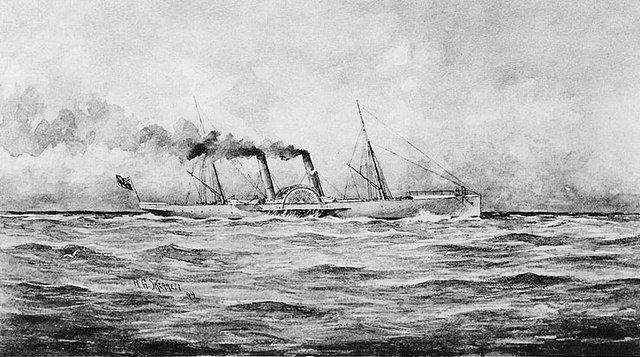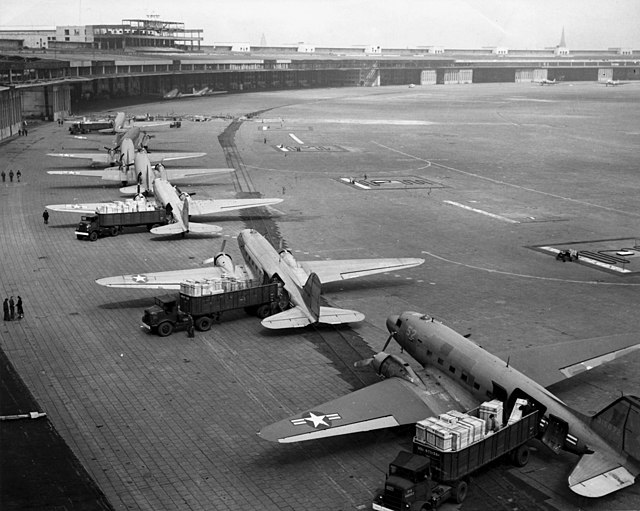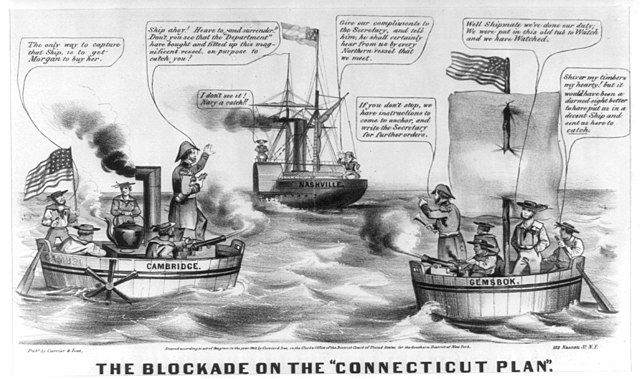A blockade runner is a merchant vessel used for evading a naval blockade of a port or strait. It is usually light and fast, using stealth and speed rather than confronting the blockaders in order to break the blockade. Blockade runners usually transport cargo, for example bringing food or arms to a blockaded city. They have also carried mail in an attempt to communicate with the outside world.
Blockade runner SS Banshee, 1863
A Confederate blockade runner at anchor at St. George's, Bermuda
A blockade is the act of actively preventing a country or region from receiving or sending out food, supplies, weapons, or communications, and sometimes people, by military force.
A blockade differs from an embargo or sanction, which are legal barriers to trade rather than physical barriers. It is also distinct from a siege in that a blockade is usually directed at an entire country or region, rather than a fortress or city and the objective may not always be to conquer the area.
C47s unloading at Tempelhof Airport in Berlin, part of the airlift of supplies which broke the Soviet Union's 1948 land blockade of West Berlin
In World War II, German U-boats attempted to stop ships carrying food, supplies and matériel from reaching the United Kingdom, an example of a distant blockade.
President Kennedy and his advisors discuss the Cuban Missile Crisis. Part of the US response to Soviet missiles being placed in Cuba was a naval blockade of the island.
A Northern cartoonist ridicules the Union's initial attempts to blockade ports of the Confederacy in the American Civil War






